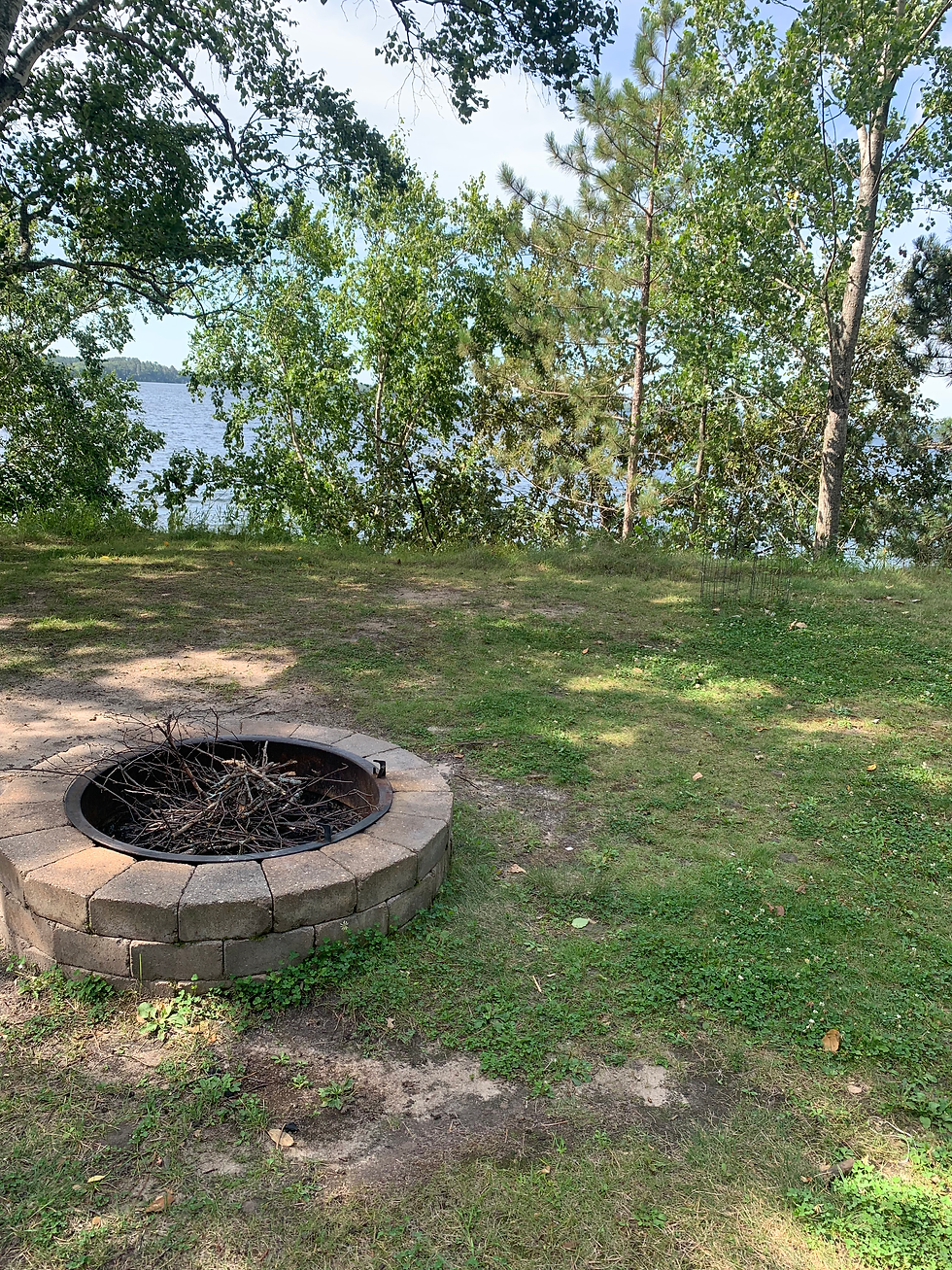RALALA Kicks off Lake Steward Program with Parade of Shores
- Jodi Eberhardt
- Aug 15, 2021
- 4 min read
Updated: Aug 17, 2021
To showcase examples of shoreline practices that contribute to lake health and clean water, Roosevelt and Lawrence Area Lake Association (RALALA) hosted a parade of shores on July 24, 2021. Thank you to our landowners for participating in the tour! If you missed it, here's a chance to learn more about the properties on the tour.
Each project highlighted different techniques to protect the health of the lake:
Buffer zones adjacent to the shoreline
Rain gardens and runoff containment structures
Mitigation of shoreline disruption and erosion caused by significant ice heaves
Steep slope stabilization utilizing native wildflowers
Because of these projects, rainwater is filtered, runoff is reduced, slopes and shorelines are stabilized preventing erosion and sediment entering the lake. These practices benefit everyone that uses the lake with cleaner water and reduced algae and weed growth.
The tour started at Crooked Lake Township Hall where the lake association provided a map and packets to explain what people would see at each site.

Here's information about each site and a link to download the information that was in the tour packet:
1. Outing Dock Landing
RALALA has started a shoreline buffer project at the Outing Dock Landing. It's a visible site along the highway with signs explaining the benefits of shoreline buffers. The public location allows everyone to see a project in progress. Planting in summer 2021.
2. Luscher Park

A collaboration between Crooked Lake Township Board of Supervisors and Crooked Lake Township (CLT) Lakes and Shores Committee led to a shoreline buffer adjacent to the Lawrence Lake boat launch. It effectively limits runoff into Lawrence Lake and models how others can establish a “grow don’t mow” shoreline at their residences.
The process began with a consultation with Kelly Condiff from Cass Soil and Water Conservation District. Aaron Soltau from Prairie Restorations, Inc. (PRI) was selected for the project, chosen from a DNR list of approved native plant suppliers and landscapers which is available online at https://www.dnr.state.mn.us/gardens/nativeplants/suppliers.html and organized by regions of the state. The site was planted in August of 2020.
3. Lloyd and Ingrid Thyen

The following article was distributed by Minnesota Lakes and Rivers Advocates honoring Lloyd as the first recipient of their statewide distinction: Lake Steward. The program is executed in conjunction with RALALA. The first step is completing the Lake Steward Quiz found at mnlakesandrivers.org.
When recognized at RALALA’s Protecting Our Lakes Kickoff event Lloyd commented: “It’s not that hard, just quit mowing!”
4. Bob and Sandi Eddy

The summer of 2014 brought many torrential rains and significant runoff problems to the Eddy property. After one heavy rain a race track of runoff roared from the back of their lot down the cart path and into the lake leaving cavernous ruts and holes. Managing the flow of water needed drastic improvement. During a subsequent heavy downpour, Bob videotaped what was occurring—where the runoff came from, where it went and what effect it had. In many cases they were quite surprised. Bob and Sandi then contacted a local contractor and planned dry wells and rain gardens to manage the water flow. Most of the runoff from the back of their lot is captured by the dry wells. The rain gardens capture and soak up the rain from the paved driveway.
5. John and Bonnie Rowell

Rowell's hillside is covered in native plants. They add to what is growing naturally and enjoy how it changes every year. “Our lot may not look manicured and pretty for many people but we love seeing what wildflowers come up each year without any work on our part. We love nature and the natural look and feel of our place. We enjoy colorful flowers from early spring ‘til late fall.” - Bonnie. The property also uses infiltration steps (see photo), moved the fire pit away from the lake to reduce phosphorus runoff, and use gravel rather than impervious surface for a patio around the new fire pit.
6. Kim and Nicolas David

Their natural, undisturbed property sits behind 1400 feet of shoreline along which ice has caused considerable damage. It varies in intensity from year to year but recently created ice ridges reached over 5 feet in height. To mitigate this destruction, they preserved the historic ice ridges but excavated access to the lake and constructed a living shoreline. Coir logs were installed, held in place by stakes (all biodegradable materials) and native plants with long roots were planted among and behind this retaining wall. Further sedimentation will occur and stabilize the shoreline. In contrast, rock rip rap can cause even more substantial undercutting of the bank. Rocks are pushed into the soil by ice movement causing the surface layer of soil to curl back over the top of the rocks and often fall into the lake. This undercutting erodes the bank at a rapid pace. In contrast, living shorelines increase stable ground.
This project was partially funded by a grant from Land and Waters and is part of a larger initiative. Rosevelt and Lawrence Area Lake Association (RALALA) has started a number of education programs to protect the lakes with shoreline land management initiatives. The "Protecting Our Lakes" program aims to:
1. Build awareness: Show everyone living along the lakeshore about the value of managing land for lake health and provide support for individual endeavors and to
2. Create action: Support landowners in their own projects by offering advice and helpful resources.


Comments